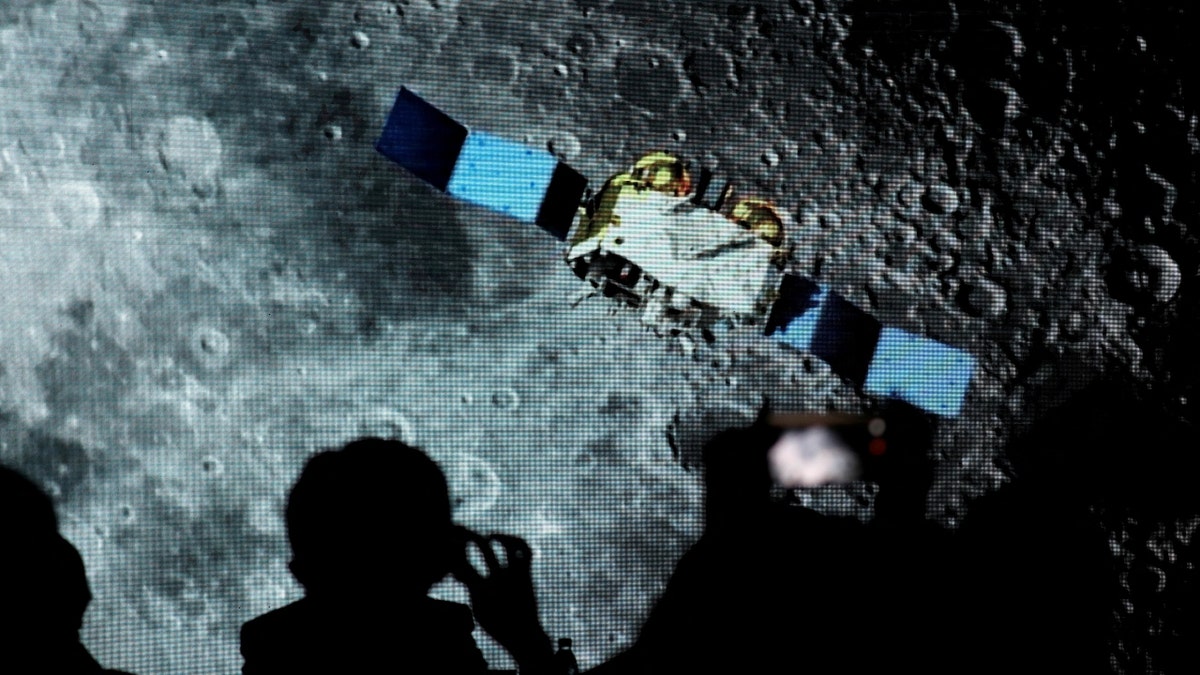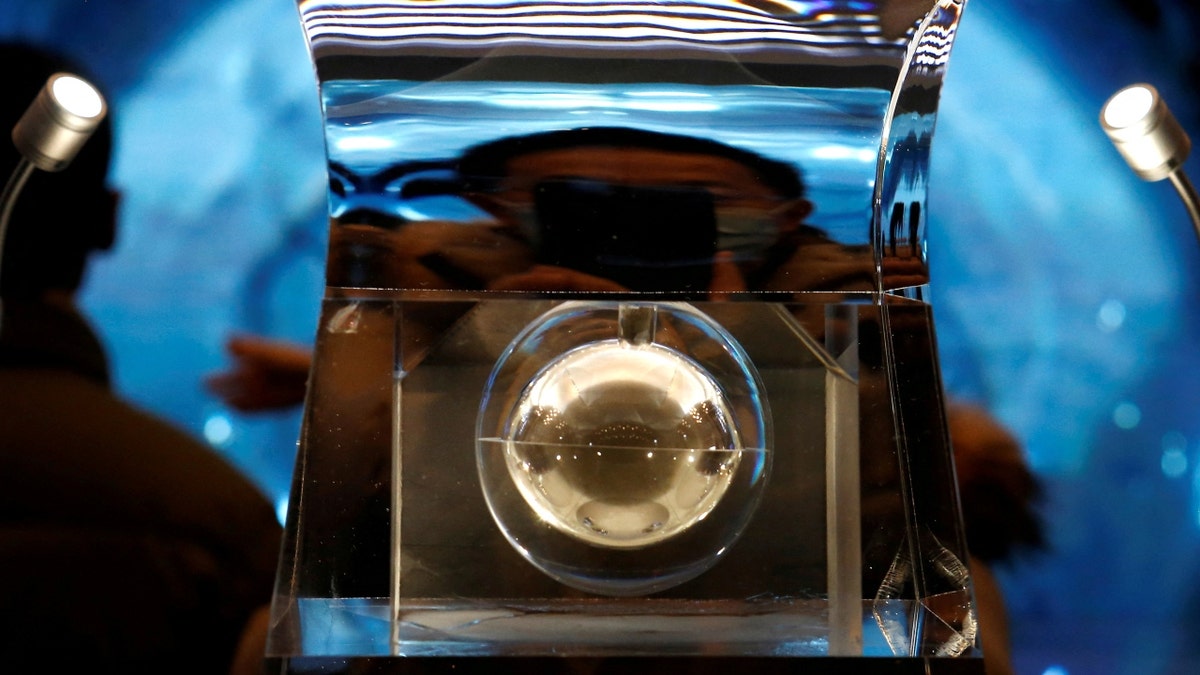The Moon is the ‘proving ground’ for an eventual mission to Mars: Jim Bridenstine
Former NASA administrator Jim Bridenstine provides the latest on NASA’s Artemis 1 mission following its successful launch on ‘Fox News Live.’
Scientists have discovered a new and renewable source of water on the moon in samples from a Chinese lunar mission.
Water was found in tiny glass beads in the lunar dirt where violent meteorite impacts occur. The beads are the width of just hairs, and the water was a small fraction of that.
The samples were returned from the moon in 2020, including 32 glass beads that were randomly picked from lunar dirt from the robotic Chang'e-5 mission.
WEBB SPACE TELESCOPE CAPTURES DUST STORM ON REMOTE PLANET

A screen shows footage of spacecraft for Chang'e-5 Mission, during an event on China’s lunar exploration program, at the National Astronomical Observatories of Chinese Academy of Sciences (CAS), in Beijing, China, January 18, 2021. (REUTERS/Tingshu Wang/File Photo)
Mining the water would be tricky, because there are billions to trillions of beads, according to researchers.
"Yes, it will require lots and lots of glass beads," Hejiu Hui of Nanjing University, who took part in the study, told The Associated Press. "On the other hand, there are lots and lots of beads on the moon."
The beads could continue to yield water due to continuous streams of hydrogen in solar wind. Solar wind is a stream of charged particles that emanate from the outermost part of the star's atmosphere.
"Solar wind-derived water is produced by the reaction of solar hydrogen with oxygen present at the surface of the lunar glass beads," Sen Hu of the Chinese Academy of Sciences' Institute of Geology and Geophysics, a co-author of the study, told Reuters.

In this Thursday, Dec. 17, 2020, photo provided by China's Xinhua News Agency, technicians prepare to weigh a container carrying moon samples retrieved by China's Chang'e 5 lunar lander in Beijing. ((Jin Liwang/Xinhua via AP, File))
Hui said that more samples will be studied in the future and more work is necessary to determine whether water could be extracted by heating the beads.
NEIL DEGRASSE TYSON SAYS JAMES WEBB SPACE TELESCOPE IS WINDOW TO UNIVERSE 'NEVER BEFORE ACHIEVED'
In addition, the scientists need to do more studies to find out whether the water would be safe to drink.
However, Hui said his team's results show that "water can be recharged on the moon’s surface... a new water reservoir on the moon."

Moon samples from China’s lunar exploration program Chang'e-5 Mission are displayed during an exhibition at the National Museum in Beijing, China, March 3, 2021. (REUTERS/Tingshu Wang/File Photo)
The findings were published on Monday in the journal Nature Geoscience.
Previous studies using samples returned by the Apollo astronauts found water in glass beads formed by lunar volcanic activity, which could also provide water.
When NASA sends astronauts back to the moon – currently slated for 2025 – it'll aim for the South Pole, where permanently shadowed craters are believed to be packed with frozen water. The agency plans to announce the names of the astronauts next week; they are the first moon astronauts in half a century.
Reuters and The Associated Press contributed to this report.





















